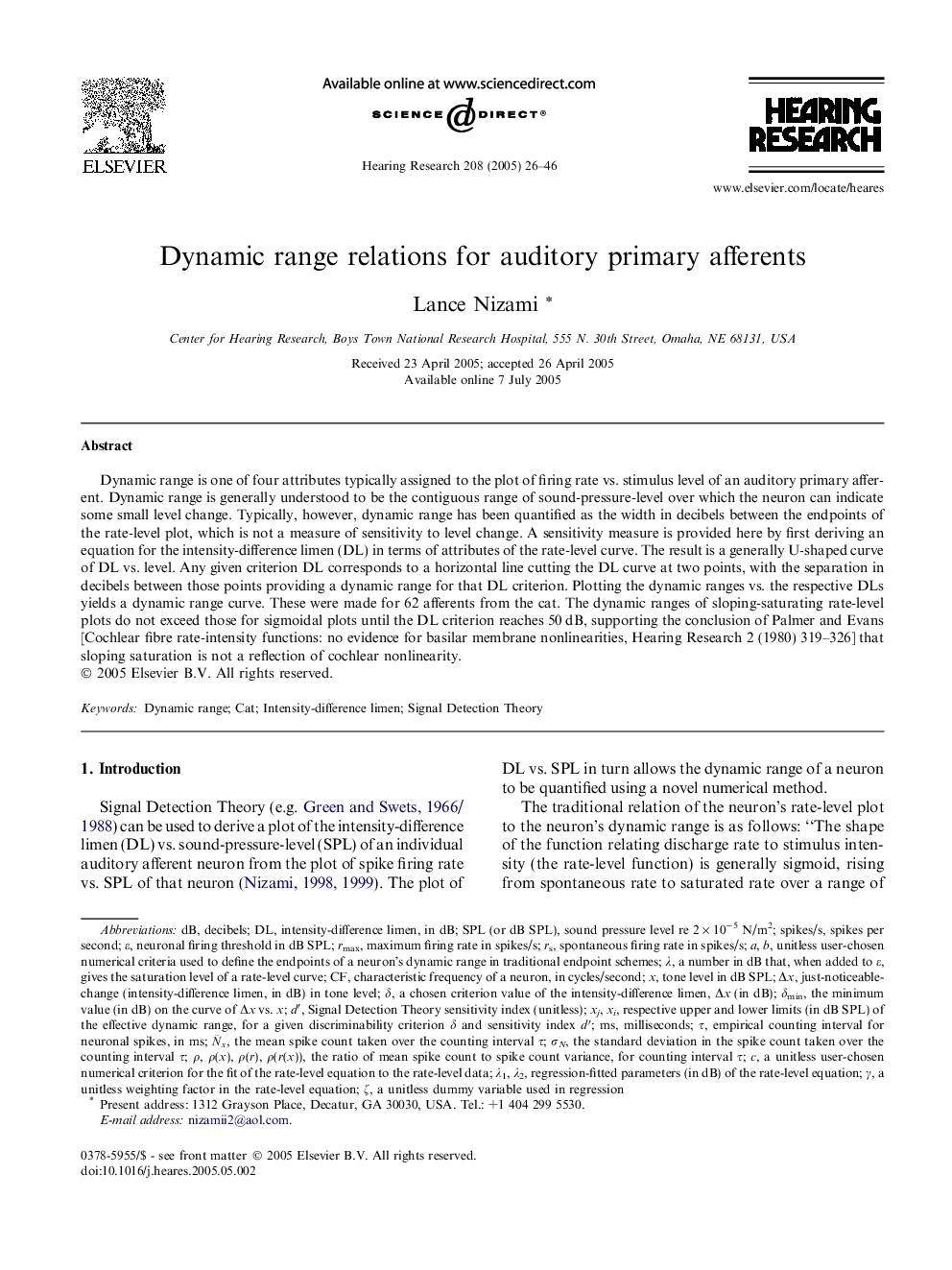| Article ID | Journal | Published Year | Pages | File Type |
|---|---|---|---|---|
| 9436546 | Hearing Research | 2005 | 21 Pages |
Abstract
Dynamic range is one of four attributes typically assigned to the plot of firing rate vs. stimulus level of an auditory primary afferent. Dynamic range is generally understood to be the contiguous range of sound-pressure-level over which the neuron can indicate some small level change. Typically, however, dynamic range has been quantified as the width in decibels between the endpoints of the rate-level plot, which is not a measure of sensitivity to level change. A sensitivity measure is provided here by first deriving an equation for the intensity-difference limen (DL) in terms of attributes of the rate-level curve. The result is a generally U-shaped curve of DL vs. level. Any given criterion DL corresponds to a horizontal line cutting the DL curve at two points, with the separation in decibels between those points providing a dynamic range for that DL criterion. Plotting the dynamic ranges vs. the respective DLs yields a dynamic range curve. These were made for 62 afferents from the cat. The dynamic ranges of sloping-saturating rate-level plots do not exceed those for sigmoidal plots until the DL criterion reaches 50Â dB, supporting the conclusion of Palmer and Evans [Cochlear fibre rate-intensity functions: no evidence for basilar membrane nonlinearities, Hearing Research 2 (1980) 319-326] that sloping saturation is not a reflection of cochlear nonlinearity.
Related Topics
Life Sciences
Neuroscience
Sensory Systems
Authors
Lance Nizami,
